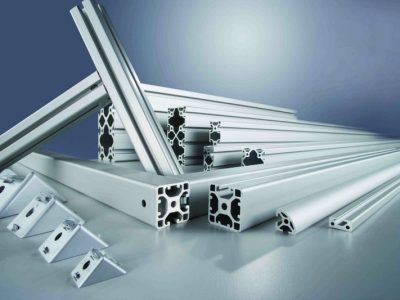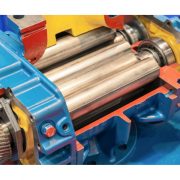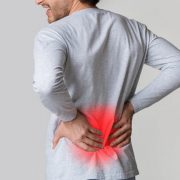Health and safety should be the biggest priority for all businesses – big and small. Many organisations in Australia fail to meet the correct health and safety standards and are putting their employees, their goods and the reputation of their business at risk.
From improper forklift use to harmful spillages, here are the 5 most common workplace hazards, and advice for how to prevent them from happening.
- Falls from a height
Unsurprisingly, many workplace violations in Australia are related to ladders and scaffolding – more explicitly, workers falling off them from a height.
To combat this, employers should conduct in-depth risk assessments within their space, and effectively identify all of the locations where falls could occur and therefore must be protected. Employers should also train their employees on the correct usage of all ladders and scaffolding, and offer working gear that is the correct size for the individual.
Employers should also carefully consider the location of anchor points, as certain things can weaken a harness, such as chemicals or sharp edges. Regular checks and inspections of these anchor points are crucial for avoiding accidents.
- Electricals
Faulty electricals can play a big part in the violation of workplace safety standards. This includes blocked breakers, but perhaps the most surprising culprits are extension cords.
Improper use of extension cords is a huge safety concern. Using multiple extension cords together to give power to something far in the distance (aka “chaining”) is highly dangerous. This is because extension cords are designed for temporary use only, not for long periods of time, as they get hot. They can, therefore, become faulty, and if there is a long “chain” of them this increases the chance of electrocution.
Employers should, therefore, ensure they purchase the correct type of extension cord for the task at hand – cords with more power voltage won’t heat up so quickly. Alternatively, employers should enlist the expertise of an electrician to create more power outlets in the space.
- Poor maintenance
Bad housekeeping is another reason why accidents happen in the workplace. Blocked fire exits, cluttered aisles, overloaded racks and stacks, and leaks and spillages are highly hazardous and can cause trips, slips and falls. What’s more, spillages that go uncleaned can lead to harmful bacteria that could cause the spread of dangerous viruses.
Employers should enforce that their employees contribute to the safety of the workspace. This could mean different things to different businesses, but within a warehouse setting, for example, all employees should spend just 5-10 minutes at the end of their shifts cleaning and tidying their workstations. Employees should also know who to alert when they spot a dangerous hazard in the workplace.
To assist with maintaining a clean and tidy workspace, employers should consider using ride on floor scrubbers. These industrial floor cleaners are an idea for large commercial spaces, like warehouses, factories, construction sites, airports, runways, shopping centres, hospitals, hotels, schools, etc. Using a commercial ride on floor sweeper or scrubber will take the hassle out of cleaning, and encourage employees to maintain a clean and safe working environment.
- Chemicals
If a workspace houses dangerous chemicals, there needs to be a strict procedure for employees to follow concerning how they should be handled. Even if the smallest amount of chemicals are stacked on shelves, over time this could build up and cause the shelves to buckle under the weight. Then, as soon as there is a spillage it could trigger an explosive chemical reaction, which could damage goods or worse cause a fatality.
To tackle the dangers around housing chemicals, organisations should create an inventory that explicitly states what each chemical is, its uses, and how to correctly handle it and dispose of it. All chemicals should be correctly labelled so that the handler knows exactly what to do with it.
- Forklifts
Incorrect forklift use is another workplace health and safety hazard in Australia, with many businesses experiencing forklift-related incidences. This could be due to pressure placed on employees to complete a task within a tight timeframe, which may lead the forklift driver to not follow proper procedure whilst driving.
They may be inclined to take shortcuts, such as driving faster than they should do or carrying a load that is too heavy or hastily stacking goods without ensuring they are properly secured.
To combat this, employers should ensure that all their forklift drivers are properly trained and monitored and that the workspace is clear for correct forklift use.
Reasons why small businesses don’t adhere to Australian health and safety regulations
When it comes to adhering to Australia’s workplace health and safety regulations, small businesses are often presented with more problems than large businesses, and fall victim to a higher number of workplace incidents and injuries.
A small business is considered to have less than 500 employees, and with that has fewer resources and fewer health and safety supervisors. A lack of professional experience and health and safety expertise can leave a small business without the correct information, and oftentimes an employee may be taking on the role of health and safety supervisor as well as their own role. All of which can, unfortunately, lead to problems.
Tips for the prevention of workplace accidents
Training: Employers should administer proper health and safety training to all employees as a part of their induction. If they can, organisations should hire a designated health and safety supervisor to be continually present onsite, or at least lead health and safety workshops. An organisation may even choose to invest in getting their employees specialist certifications.
Conduct regular audits and inspections: Organisations should practise regular health and safety inspections to ensure everything is in working order and that nothing poses a threat to the wellbeing of the employees or the goods.
Conclusion
It doesn’t matter what kind of business it is, or what size it is, health and safety is of utmost importance. It is crucial that employers lead by example and set high standards for health and safety, as they will run into fewer (hopefully zero) issues.










Comments